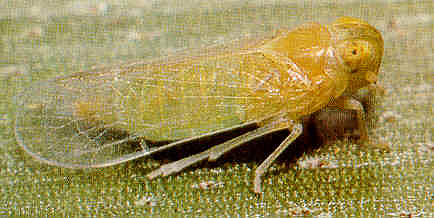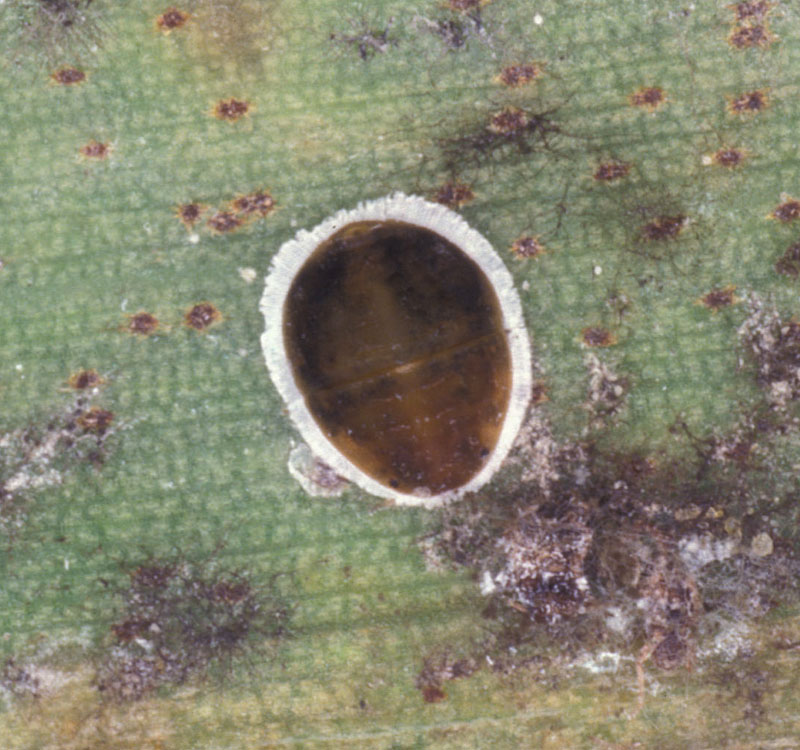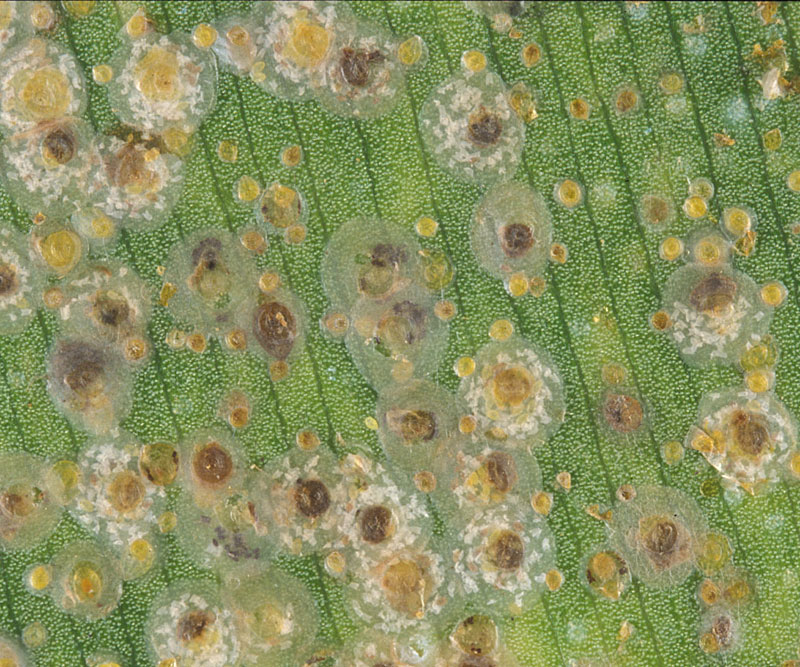Bugs (Hemiptera)
|
American palm cixiid, Myndus crudus, adult; Photo courtesy of University of Florida |
|
coconut mealybug, Nipaecoccus nipae, adults and crawlers; Photo by Lyle Buss, University of Florida |
|
palm aphid, Cerataphis brasiliensis, adult; Photo by James Castner, University of Florida |
|
coconut scale, Aspidiotus destructor, adult females and nymphs; Photo by Lyle Buss, University of Florida |
|
royal palm bug, Xylastodoris luteolus, adult; Photo by Lyle Buss, University of Florida |
Rank & taxon
Order Hemiptera
Description
True bugs range in size from 1 mm to 15 cm. There is a great deal of morphological diversity in the order. The defining feature of the order is their piercing-sucking mouthparts which have evolved into a rostrum capable of piercing tissues and sucking out the liquids, usually piercing plant tissues to suck sap. The name "Hemiptera" refers to the forewings of many hemipterans, which are hardened at the base but membranous at the ends, termed hemelytrahemelytra:
the partially leathery (base), partially membranous (tip) forewings typical of many Hemiptera
, or "half-wings."
Distribution
Worldwide, over 80,000 species
Biology/life cycle
Hemipterans are hemimetaboloushemimetabolous:
with simple metamorphosis from egg to nymph stages to adult, lacking a true pupal stage (usually just a series of molts)
, meaning that they do not undergo true metamophosis, but rather have a serious of nymphal stages leading to the final adult stage. Most hemipterans are phytophagousphytophagous:
feeding upon plant matter
, generally feeding on plant sap. Many of these species are considered significant pests. Most of the remainder are predatory (some are even used as biological pest control agents), though they may be parasiticparasitic:
living in close association with another species (host), feeding upon it while providing no benefit
, feeding on the blood of larger animals (including bedbugs and kissing bugs). Some hemipterans are adapted to an aquatic lifestyle, including the only group of insects that are truly marine, the genus Halobates. Many hemipterans are known for their symbiotic associations with ants; phloem-feeding Hemiptera excrete a sugary, sticky substance known as honeydewhoneydew:
the sticky, sweet secretion produced by sap-feeding bugs
, which the ants utilize in exchange for protection from predators and parasites.
Hosts
Palms: a wide variety of palms
Other: a wide variety of plants
Representative taxa on palms
The American palm cixiid, Myndus crudus, is a planthopper that feeds on the phloem sap of a number of palm species. The adult is the only known vector of a serious and destructive palm disease, lethal yellowing, in Florida and the Caribbean. The nymphs develop in the root zone of grasses.
Though native to Oceania and Southeast Asia, Nipaecoccus nipae (coconut mealybug) is a common pest of various palm species in greenhouses and container-grown palms in North America, occuring most commonly on Howea spp.
Royal palm bug, Xylastodoris luteolus, attacks young leaves of royal palms (Roystonea regia), a popular ornamental palm native to southern Florida and Cuba.







